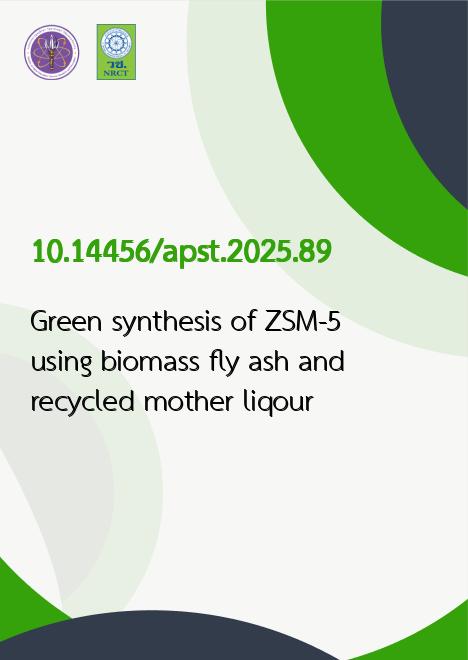
|
Green synthesis of ZSM-5 using biomass fly ash and recycled mother liqour |
|---|---|
| รหัสดีโอไอ | |
| Creator | Patthra Pengthamkeerati |
| Title | Green synthesis of ZSM-5 using biomass fly ash and recycled mother liqour |
| Contributor | Phatchariya Welutung |
| Publisher | Khon Kaen University, Thailand |
| Publication Year | 2568 |
| Journal Title | Asia-Pacific Journal of Science and Technology |
| Journal Vol. | 30 |
| Journal No. | 6 |
| Page no. | 6 (8 pages) |
| Keyword | Biomass fly ash, Green synthesis, Mother liqour recycling, ZSM-5 |
| URL Website | https://apst.kku.ac.th/ |
| Website title | https://apst.kku.ac.th/green-synthesis-of-zsm-5-using-biomass-fly-ash-and-recycled-mother-liqour/ |
| ISSN | 2539-6293 |
| Abstract | The effects of synthesis conditions, silica derived from biomass fly ash, and mother liquor recycling on the synthesis of ZSM-5 were investigated using both hydrothermal and clear solution methods. The synthesis of ZSM-5 from TEOS was optimized using a hydrothermal autoclave reactor and reflux assisted by microwave treatment, revealing that the combined reflux–microwave approach significantly enhances crystallization, resulting in high-quality ZSM-5. In contrast, reduced synthesis time and milder conditions (e.g., lower pressure) proved ineffective, highlighting the need for more rigorous conditions to promote zeolite formation. For biomass fly ash-derived silica, two distinct molar ratios were tested, demonstrating that the ratio 25Si:1Al:9TPAOH:0. 16NaOH:495H2O:100EtOH was more effective than 1Al2O3:40SiO2:0.2TPAOH, which produced a mixture of silicalite-1 and amorphous phases. Recycling the mother liquor from ZSM-5 synthesis yielded comparable product quantities and preserved well-defined crystallinity, although excess sodium ions reduced yields. Scanning electron microscopy showed that recycling resulted in smaller, well-dispersed crystals, suggesting enhanced nucleation and crystal growth. Overall, this study highlights the critical role of synthesis conditions and precursor selection in the efficient, resource-conscious production of ZSM-5 from biomass waste. |